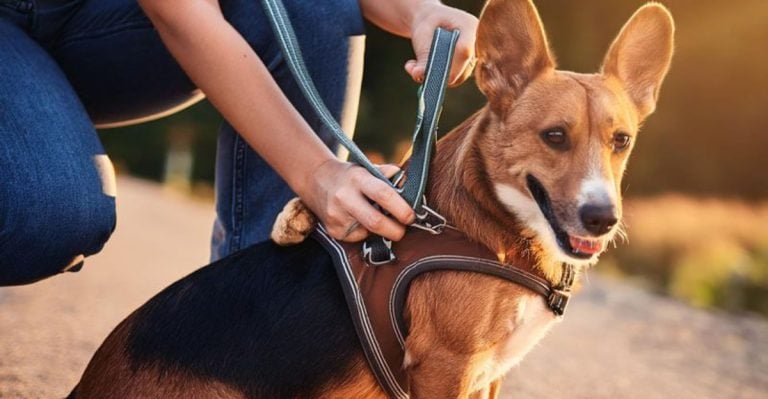I Talked to a Pro Dog Behaviorist. Here Are His 15 Tips for Teaching the Perfect Recall.
If you’ve ever stood in a park yelling your dog’s name while they joyfully ignore you and bolt in the opposite direction—welcome to the club.
Getting a dog to come when called sounds simple in theory, but in real life? It can feel like a test of patience, vocal range, and just how much your dog actually respects you (spoiler alert: sometimes not much).
And while most dogs can learn recall, getting it to the “bulletproof” level—where they turn on a dime and run to you no matter what—is a different game entirely.
So, I went straight to the source: a professional dog behaviorist who’s spent years helping owners build stronger, more reliable connections with their pups.
We’re not talking basic pet-parent advice like “carry treats” or “say it in a happy voice.”
These are tested, practical strategies designed to turn your dog into a recall superstar—even when they’re distracted by squirrels, other dogs, or the infinite wonder of a muddy puddle.
Whether you’ve got a high-energy retriever with selective hearing or a stubborn hound who pretends you don’t exist, these tips are designed to cut through the chaos.
No yelling. No chasing. Just clear, proven methods that build trust, responsiveness, and consistency.
Ready to go from “they sometimes come back” to “they never let you out of their sight”? Here are the top expert-backed recall techniques that can transform your dog’s behavior—and save you a whole lot of stress at the dog park.
1. Start in a Low-Distraction Environment
If you’re hoping to build a bulletproof recall, don’t start at the dog park. A reliable “come” begins in the quietest environment possible—think living room, hallway, or fenced backyard.
Your dog needs a chance to understand what you’re asking without the world pulling their attention in 20 different directions.
Once they consistently respond to the recall cue indoors, you can slowly raise the stakes.
Gradually move to environments with mild distractions—like your driveway or a quiet field—before jumping into the deep end with squirrels and other dogs. It’s about setting them up to succeed, not testing them to fail.
2. Use a Consistent Recall Cue
Your recall word is your dog’s emergency beacon. But if you’re calling “come” one day and “here, boy!” the next, you’re muddying the message. Choose a single, clear cue—like “come” or “here”—and stick with it.
Consistency is how dogs build associations. The more you pair that word with something amazing (treats, praise, freedom), the stronger the response becomes.
Changing it up confuses your dog and weakens their trust in the command. The word itself doesn’t matter much—what matters is that it means good things happen when they listen.
3. Never Use Recall for Negative Experiences
If your dog comes back to you and is immediately scolded or leashed and taken home, guess what they’ll remember? That “come” equals punishment or the end of fun. That’s the fastest way to break recall.
Even if your dog takes their sweet time coming back, always reward them. You can work on speed later, but punishing them for coming back—even slowly—kills motivation.
Recall should always lead to positive consequences. That’s how you turn a dog who hesitates into one who sprints toward you like you’re holding a steak.
4. Be High-Value: Use Irresistible Rewards
Not all treats are created equal. If you’re offering kibble while your dog’s nose is full of rabbit scents, you’ve already lost. During recall training, pull out the big guns—think bits of chicken, liver treats, or anything your dog would sell their soul for.
And it’s not just about food. Some dogs love toys, affection, or a chance to go chase a ball.
Know what drives your dog and use it to your advantage. The recall reward should be something they don’t get any other time. That exclusivity makes it special—and worth coming back for.
5. Make It a Game
Want your dog to love recall? Make it play. A serious tone and stiff body language might work for “sit,” but “come” should feel like an invitation to party. Run away from your dog, clap your hands, act silly—they’ll be dying to chase you down.
You can also try hide-and-seek in the house or “ping-pong recall,” where two people call the dog back and forth with rewards.
These games build enthusiasm and responsiveness without feeling like drills. When your dog is having fun, they’re more likely to choose you over distractions.
6. Practice Randomly—Not Just at Mealtime
If your dog only hears “come” before dinner, don’t expect them to listen at the dog park. To build a reliable recall, you have to make it part of everyday life—not just when it’s convenient.
Try calling your dog at unexpected times. When they’re lounging on the couch, sniffing the yard, or mid-walk, call them enthusiastically and reward like crazy.
The goal is to teach them that “come” isn’t just tied to meals or going home—it’s a jackpot cue that can happen anytime, anywhere.
7. Always Reward—Even If They’re Slow
Yes, it’s frustrating when your dog takes their sweet time responding to a recall. But punishing or ignoring them when they finally show up teaches one thing: coming back isn’t worth it.
And next time? They may not come at all.
Even if your dog hesitated or detoured, reinforce the recall with praise and a treat. You’re not rewarding the slowness—you’re reinforcing the decision to return.
Later, you can work on speed and enthusiasm, but for now, focus on celebrating the behavior you want to see more of.
8. Use a Long Line Outdoors
Before you trust your dog off-leash, a long training lead is your best friend. It gives them the freedom to explore while keeping you in control. A 20- to 30-foot line is perfect for working on recall in open spaces.
With the long line, you can gently guide your dog if they ignore the cue—or reinforce success with a quick reel-in and reward.
It’s a safety net that builds confidence for both of you. Over time, as recall improves, you can phase it out. But in the early stages, that tether is gold.
9. Train for Distance, Duration, and Distraction (3 D’s)
Reliable recall isn’t just about your dog responding when you’re three feet away with no distractions. You’ll want to train across three dimensions: how far you are, how long they’ve been doing their own thing, and what’s happening around them.
But don’t increase all three at once. Maybe start with distance while keeping distractions low.
Then add in a longer wait before calling them. Finally, try it when another dog walks by or a squirrel scampers past. It’s a gradual build that turns basic recall into real-world reliability.
10. End Every Session on a Win
Your last recall of the day should always be a victory. If you push too far and your dog fails, that’s the moment that sticks in their mind. So keep sessions short, upbeat, and end while your dog is still enthusiastic.
That might mean calling it after two successful reps instead of five. Or finishing with an easy, guaranteed win and a shower of praise.
Ending on a high note keeps your dog motivated and excited to train again tomorrow—and that consistency is where real results come from.
11. Be the Most Interesting Thing Around
Let’s face it: the world is full of distractions. Squirrels, smells, other dogs—these are tough competitors for your dog’s attention. That’s why you need to become the most exciting thing in their world. Enthusiasm goes a long way.
Use a playful tone, exaggerated movements, or even run the other way. Make yourself a moving target they can’t resist chasing.
If your dog thinks returning to you means fun, praise, and rewards—not dull commands—they’ll choose you over everything else, even mid-chase.
12. Don’t Overuse the Cue
“Come, come, come!”—sound familiar? Repeating the recall cue weakens it. Your dog starts tuning it out, treating it more like background noise than a command that deserves action. If they don’t respond the first time, don’t keep shouting.
Instead, pause and evaluate. Were they too distracted? Did you train in a situation that’s too advanced?
Go back a step and reinforce the behavior in easier settings. A single, clear cue followed by action is more effective than a repeated chant they’ve learned to ignore.
13. Teach an Emergency Recall
An emergency recall is like a panic button—you only use it in situations where safety’s on the line. It’s a separate, special word (like “NOW!” or “TOUCHDOWN!”) that signals immediate response—and gets the absolute best reward you’ve got.
Train it by pairing the cue with something over-the-top amazing, like a whole hot dog or a game they adore. But use it sparingly. If it becomes just another recall word, it loses its power. Keep it sacred, and when you need it most, it’ll work like magic.
14. Proof It in the Real World
A dog that comes running in your backyard might still bolt at the beach. That’s because behavior doesn’t automatically transfer to new environments. You have to “proof” recall in different settings to make it reliable everywhere.
Start with low-stakes outings—quiet parks, a friend’s backyard—before challenging spots like busy trails.
Gradually layer in distractions. The more diverse your training environments, the more confident and automatic your dog’s response becomes. Real-life success doesn’t happen by accident—it’s built through reps in the real world.
15. Be Patient and Keep It Positive
Reliable recall isn’t built overnight. Some dogs catch on quickly; others take time. Either way, punishment, frustration, or rushing the process will only backfire. Patience and consistency are your best allies.
Celebrate the small wins. Reinforce every success. And if your dog backslides or ignores you, don’t take it personally.
Adjust the environment, reduce the distractions, and keep training upbeat. Positive experiences are what make recall stick—not pressure or punishment.





















